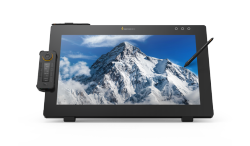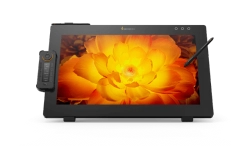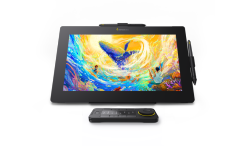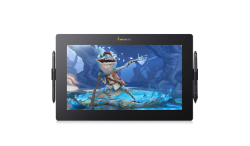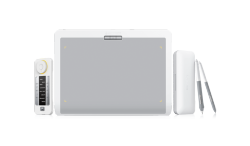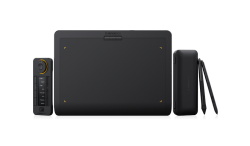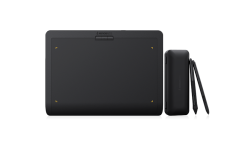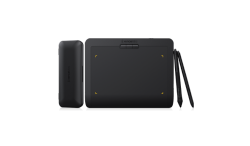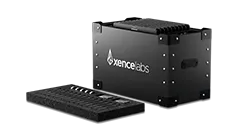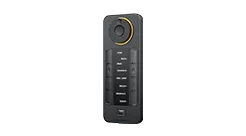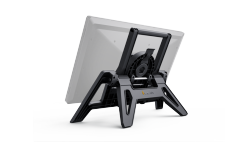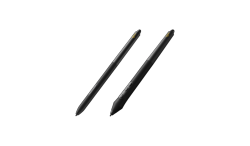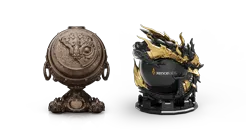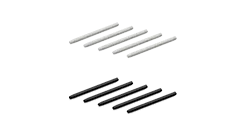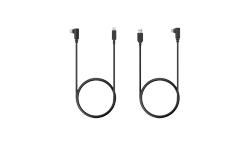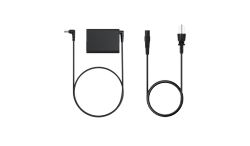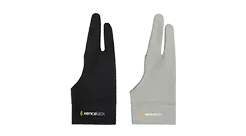
RIT Draws on Technology to
Empower Students and Faculty
3D Digital Design and Medical Illustration programs spotlight RIT's dedication to building the next generation of professional digital content creators.

Rochester Institute of Technology (RIT), located in a suburb of Rochester, NY, is a special place. The campus is open and inviting, and as the name suggests, the university's focus on technology is quite apparent as you tour the facilities. RIT's College of Art and Design, a professional art and design school, located within this university of technology, offers the very best education in such fields as animation, illustration, game development, graphic design, photography, industrial design, film editing, 3D modeling, motion design, and medical illustration.

RIT's 3D digital design curriculum is structured to mirror real-world production pipelines. Students are taught how to research, concept, iterate, and deliver within tight timelines, often simulating studio environments through team-based projects.
"RIT's creative programs stand out because of their deep integration with technology and industry.We don't teach art or design in a vacuum—we embed it in a culture of experimentation, engineering, and interdisciplinary collaboration. Our students aren't siloed into one pipeline; they build strong foundations in 3D modeling, animation, or illustration, and are also encouraged to explore applications across healthcare, games, film, AR/VR, and beyond. It's not unusual to see a character artist collaborating with a biomedical team or an environment designer working alongside engineers.
From their first semester, students engage with industry-standard software and workflows.As they progress, they work on capstone and collaborative projects that challenge them to problem-solve like professionals. We review and revise our 3D digital design curriculum constantly to reflect industry expectations and new opportunities."
Gary D. Jacobs
Associate Professor and Program Director, 3D digital design.

A similar pattern can be found within RIT's medical illustration program. As the only university in the country to offer both undergraduate and graduate programs in medical illustration, RIT provides an in-depth curriculum that's hard to surpass. The road to becoming a medical illustrator is demanding, requiring students to follow advanced coursework in both the sciences (biology, human anatomy, physiology, etc.) and art and design (2D illustration, 3D/4D digital modeling, and animation). The curriculum prepares students to deliver accurate and engaging illustrations and designs of all things related to the body, from cell structures and internal organs to skeletal systems and muscle tissues.
There's no question that graduates of RIT's Bachelor of Fine Arts (BFA) program in medical illustration are expertly prepared for the professional space and ready to work with organizations within the medical and science fields. Alison Young, wrapping up her fourth year in the medical illustration BFA program states that "the heavily hands-on and project-based curriculum familiarizes us with the technical skills and processes we'll need at the professional level. Classes in digital illustration, 3D modeling and animation, as well as other scientific visualization tools complement the rigorous biology and anatomy instruction we receive, offering us the best opportunity to succeed as medical illustrators."
"RIT's programs specifically train students to work through real-world scenario assignments, Engaging students with the type of work they might encounter after graduation gives them a huge advantage as they begin their professional lives. The more knowledge and tools we can pass along, the better."
Alan Gesek
Visiting Lecturer in RIT& College of Art and Design
and RIT College of Health Sciences and Technology.
Embracing Technology and the Digital Pen
Tech evolution is constant for RIT's 3D digital design program, so adaptability is key. "We balance core principles with emerging tools, Associate Professor and Program Director, 3D Digital Design, RIT College of Art and Design, and we don't jump on trends blindly,"says Gary D. Jacobs, Associate Professor and Program Director, 3D Digital Design, RIT College of Art and Design. "We test, vet, and pilot new technologies in context—seeing not just how they perform, but how they impact teaching and creative outcomes. Whether it's real-time rendering, procedural tools, AI-assisted workflows, or VR headsets, we evaluate through the lens of creative possibility and technical longevity."
Medical science also embraces technology to help keep up with trends and move the industry forward. RIT's medical illustration program emphasizes the importance of technological proficiency and ensures that students are well-versed in the tools today's illustrators are expected to use in their professional work. Digital fluency is critical to dozens of projects a student may encounter during his/her career.

One of the critical pieces of technology for teachers and students involved in digital content creation is the digital pen display. Pressure-sensitive pen displays, like the Xencelabs Pen Display 16 or Pen Display 24, are no longer a luxury—they're an expectation. For students, they eliminate the barrier between idea and execution. For faculty, they unlock the ability to demonstrate form, gesture, and nuance, something that lectures alone can't achieve. "The pen display has changed how we critique, annotate, and iterate, both in person and remotely. It's made our classrooms more dynamic and our feedback more precise," states Jacobs.
"The response from both students and faculty [to the Xencelabs Pen Displays] has been enthusiastic—it's clear they were built with artists in mind."
Gary D. Jacobs
Associate Professor and Program Director,
3D Digital Design, RIT College of Art and Design
RIT College of Art and Design selected Xencelabs for a few reasons: ergonomic design, responsive hardware, and a clear understanding of how creatives work. Xencelabs' pen displays align perfectly with the College's studio workflows without compromise. Several labs in the School of Art and School of Design have integrated them into courses ranging from figure drawing and digital painting to advanced 3D modeling and look development.
The medical illustration program also recognizes the importance of being tech-savvy and ensures students are up-to-date with the tools today's illustrators will be called upon to use within the scope of their work. "The world has changed, and students need to be prepared to illustrate for more than just biology and medical textbooks," continues Alan Gesek, Visiting Lecturer in RIT College of Art and Design and RIT College of Health Sciences and Technology. Digital fluency is critical to dozens of projects a student may encounter during his/her career.
MAGIC Spell Studios, a gorgeous modern structure and beacon for all to see, sits adjacent to the College. College of Art and Design faculty and students are among those who use MAGIC's state-of- the-art facilities, including its computer labs, to create films and interactive experiences.

Pen displays have become an indispensable tool for creators of digital content, delivering a natural and intuitive way to draw directly on screen with a pressure-sensitive pen that emulates the accuracy, precision, and feel of traditional media. The majority of the College's academic programs, including 3D digital design and medical illustration, have incorporated pen displays into their labs and classrooms to interface effectively and efficiently with all the incredibly powerful and amazing pressure-sensitive creative software applications available today. Adobe Photoshop, Adobe Illustrator, Autodesk Maya, Maxon Z Brush, Dassault SolidWorks, to name a few, all offer a greatly enhanced workflow when coupled with a pen display.
Whether creating a medical illustration or designing a 3D animated character, having control over line thickness, opacity, color, brush behavior, and texture is incredibly valuable. A digital pen display is also more forgiving and adaptable than traditional illustration materials, making revisions easier and more efficient.

Photo Caption: (Left to Right) Facilities team at College of Art and Design:
Robert Henderson,Senior System Administrator;
Michael Dear, Director of Operations
Erich Lehman,Lead Systems Administrator/Manager
"Our animation, graphic design, illustration, and industrial design students and faculty employ Xencelabs pen displays on a daily basis to complete their assignments. Every creative discipline requires attention to detail and accuracy, and the precision and pressure sensitivity of digital pens allow for more control of fine line work, close-up textures, and highly detailed renderings. Every creative discipline requires attention to detail and accuracy, and the precision and pressure sensitivity of digital pens allow for more control of fine line work, close-up textures, and highly detailed renderings."
Erich Lehman
Lead Systems Administrator and Manager of RIT College of Art and Design Operations

"The incorporation of pen displays has changed the style of teaching to help increase student participation and raise their illustration skills," adds Katelyn McDade, a medical illustration student in her senior year at RIT. "As the professor teaches and lectures from their computer and display, their work is projected on a large screen for students to observe and follow along with their own displays. This teaching method promotes better learning with expert visuals and heightens the interaction between the students and the professor."Pen displays have become an indispensable tool for creators of digital content, delivering a natural and intuitive way to draw directly on screen with a pressure-sensitive pen that emulates the accuracy, precision, and feel of traditional media. The majority of the College's academic programs, including 3D digital design and medical illustration, have incorporated pen displays into their labs and classrooms to interface effectively and efficiently with all the incredibly powerful and amazing pressure-sensitive creative software applications available today. Adobe Photoshop, Adobe Illustrator, Autodesk Maya, Maxon Z Brush, Dassault SolidWorks, to name a few, all offer a greatly enhanced workflow when coupled with a pen display.
Experience RIT and "Create the Future"
What sets RIT apart isn't just the tech or the talent—it's the culture. Professor Jacobs sums it up quite nicely, "We train students to ask why, not just how. We emphasize curiosity, iteration, and interdisciplinary collaboration, which makes our graduates adaptable in a rapidly changing industry. We also recognize that good tools matter, especially input devices like pen displays and tablets, which become extensions of the artist's hand. When the right technology is in place, it reduces friction between imagination and execution, helping students visualize ideas more directly and intuitively. Our goal is to help students create the future—not just keep up with it."

RIT's College of Art and Design is one of the premier schools for art and design in the country, with dozens of creative disciplines to major in. The dedicated and experienced faculty and staff are deeply committed to helping students build successful careers in their chosen fields, a goal we can all admire and support. RIT is consistently listed as one of the Top Schools for Creatives: Variety magazine recently named RIT's School of Film and Animation as one of the Top Film Schools in North America in the publication's annual Education Impact Report.
For more information on RIT, please visit www.rit.edu. For details on the College of Art & Design, go to www.rit.edu/artdesign.
Xencelabs Products
Our priority is to offer quality products at an affordable price, giving teachers and students access to the tools they need for success in subjects including math, science, and the creative arts.
• (40) Pen Display 24 (Includes the Quick Keys)(XMPD24US)
• (24) Pen Display 16 Bundles (Includes Quick Keys, Mobile Stand) (XEPDB16EFS)
• (24) Desktop Easels (XEDE)
• (23) Pen Display 16 Essentials (XEPDS16EFS)
• (23) Mobile Easels (XEMES)
*All our products include the: Kensington® Security Slots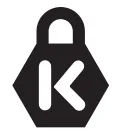
For more information about RIT, please visit www.rit.edu.
For more information about the College of Art and Design, go to www.rit.edu/artdesign




